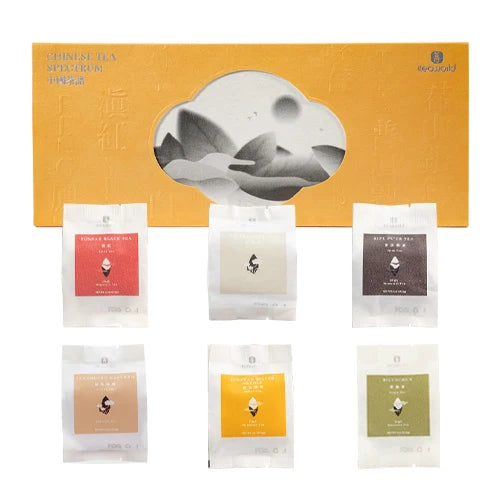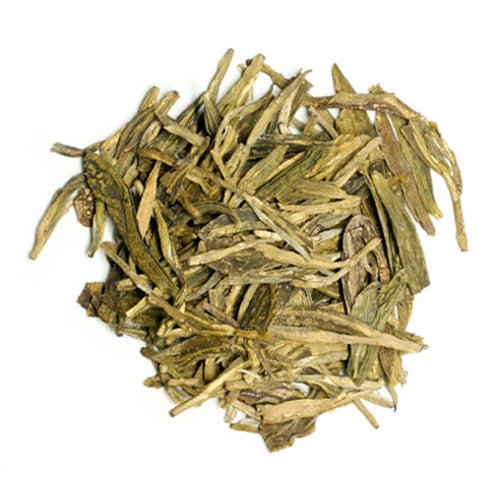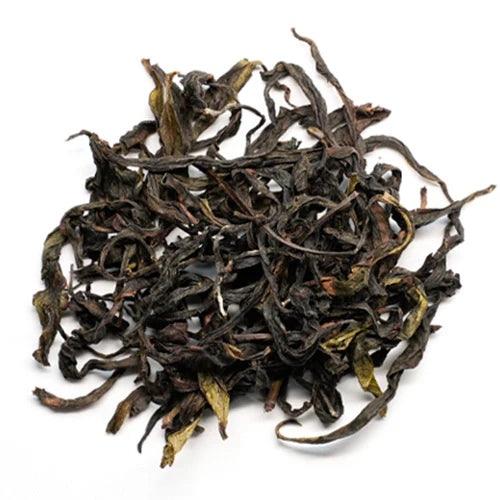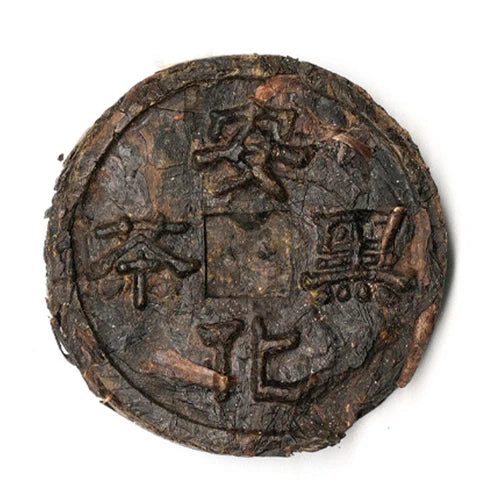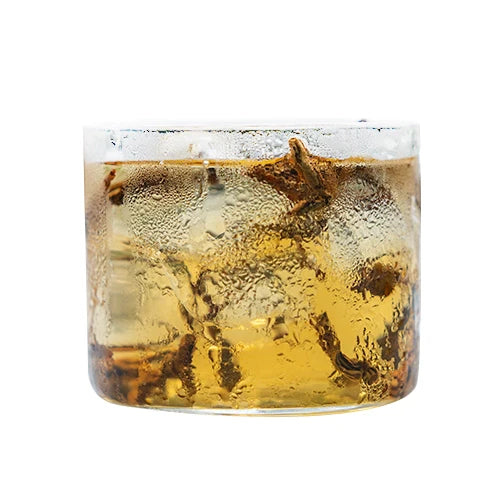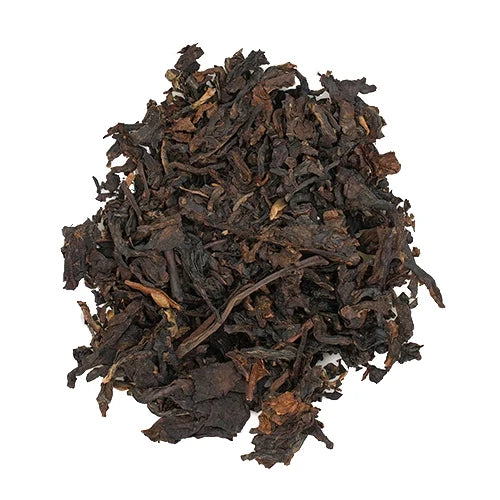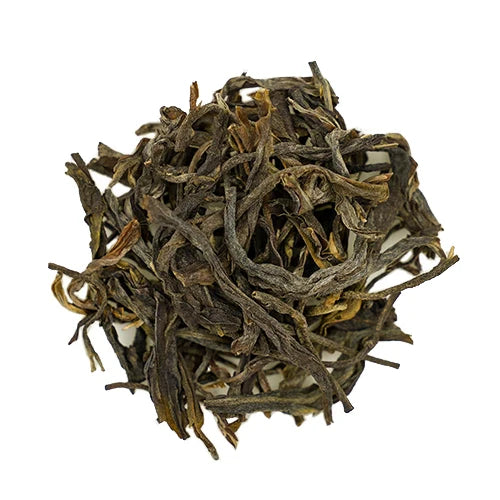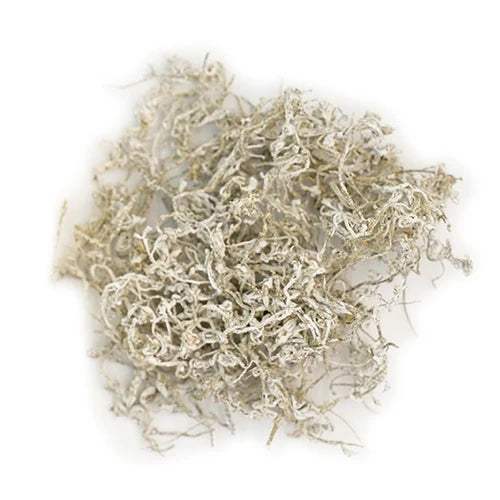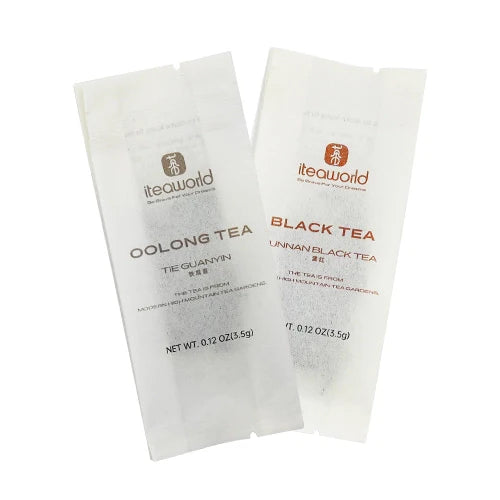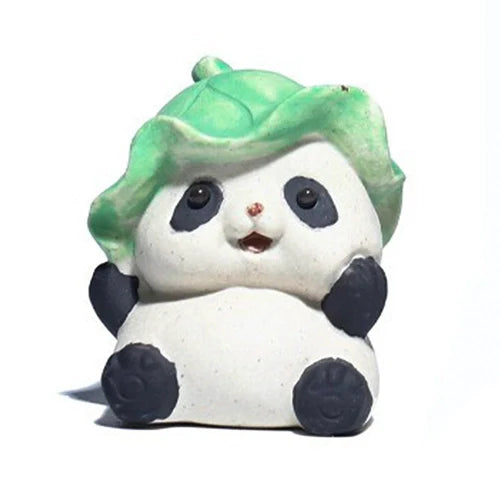Exploring Oolong Tea Craftsmanship

How to Truly Understand Oolong Tea? — Decoding the Flavor Profile of Oolong Tea
Oolong tea comes in many varieties, but the key factors that influence its flavor and aroma are: different oxidation levels, roasting degrees, tree ages, altitudes, seasons, and soil environments. To help you navigate the complex world of Oolong tea, we’ve created 6 different sample sets that highlight these factors. These sets are designed to help you discover the flavor rules of Oolong tea, making it easier to find the taste that suits your preferences. We hope these products will help more people make informed choices when buying Oolong tea.
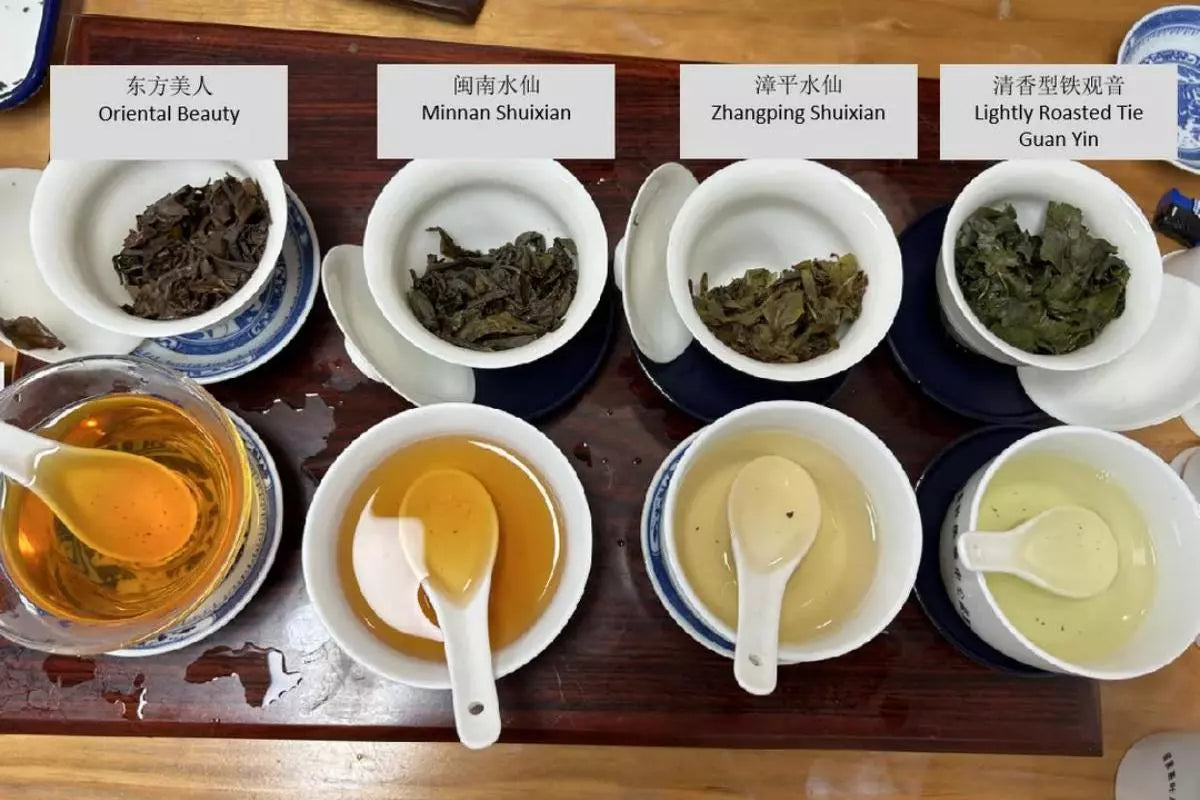
Lightly Oxidized or Heavily Oxidized Oolong tea: How to Choose?
When people talk about Oolong tea, the first thing that often comes up is the roast level. Lightly roasted Tie Guan Yin, medium roast Phoenix Dancong, and heavily roasted Wuyi Rock teas like Da Hong Pao or Wuyi Rougui are the main varieties. Generally, the higher the roast, the higher the oxidation, so oxidation and roasting levels go hand in hand. Here's what I’ve learned about the impact of these factors:
Oxidation primarily influences the aroma and the freshness of the tea’s flavor. Light oxidation gives you a fresh, floral fragrance, while heavy oxidation brings a more mature and intense nutty or honey-like scent.
Roasting affects the lasting power of the aroma and the depth of the flavor in the tea. Light roast keeps the fresh fragrance intact, while heavier roasting gives the tea a richer, fuller taste, with hints of toasted or even charcoal flavors.
Oxidation mainly determines the flavor profile and the type of fragrance, while roasting adjusts the depth of the taste, the persistence of the aroma, and the color of the liquor.
I picked a few teas to compare: a lightly roasted Tie Guan Yin, Zhangping Shuixian, Minnan Shuixian, and Oriental Beauty. These four all come from Fujian, with roughly similar roast levels (all lightly roasted), but different oxidation levels. One thing I didn’t factor in is that the tea cultivar and other processes might not be exactly the same.
Here are the oxidation levels:
Tie Guan Yin: Light oxidation (10-20%)
Zhangping Shuixian: Mild-light oxidation (25-30%)
Minnan Shuixian: Medium oxidation (40-50%)
Oriental Beauty: Heavy oxidation (60-70%)
These four types of Oolong tea, with varying oxidation levels, are part of our Oolong Tea Oxidation Degree Collection. If you’d like to explore the different factors that influence the quality of Oolong tea, we welcome you to purchase and experience them yourself.
Roast levels:
Tie Guan Yin: Very light roast, 70-80°C (158-176°F)
Zhangping Shuixian: Very light roast, 70-80°C (158-176°F)
Minnan Shuixian: Very light roast, 80-90°C (176-194°F)
Oriental Beauty: Very light roast, 70-80°C (158-176°F)
The lightly roasted Tie Guan Yin and Zhangping Shuixian are easy to find, but it's much harder to find lightly roasted Minnan Shuixian because it’s typically processed using a method more similar to Wuyi Rock tea, which focuses more on roasting. (By the way, Tie Guan Yin, Zhangping Shuixian, and Minnan Shuixian also have medium roast versions, so if you’re interested, you could try those as well.)
The lightly roasted Oolong teas bring out purer, more distinct aromas, and are perfect for tea lovers who prefer clean, high-flying fragrances.
Now, what exactly does the difference in oxidation do to the tea?
Brewing:
Use a gaiwan with 100°C (212°F) water. Use 5g of tea with 100ml of water, steep for 10-15 seconds for the first 1-3 brews. (Since Zhangping Shuixian is compressed into blocks, the first brew needs to be 15 seconds, but after that, the steeping time can be the same as the other teas.)
Liquor and Leaves:
Teas with different oxidation levels are actually pretty easy to tell apart, much like green and black tea. Green tea isn’t oxidized, while black tea is fully oxidized. Lightly oxidized Oolongs, like Tie Guan Yin and Yongchun Buddha’s Hand, still have a thicker, smoother mouthfeel than green tea and their aromas are more intense. As oxidation increases, the tea’s color turns more orange-red, and the leaves shift from green to reddish-brown.
Aroma and Taste:
Lightly Roasted Tie Guan Yin:
The floral orchid scent is very noticeable—whether in the air or in the cup. What’s important is that it’s not bitter or astringent at all. I believe anyone who enjoys green tea would love to try lightly oxidized Oolong tea.
Zhangping Shuixian:
On its own, you can really get the scent of orchid and osmanthus—floral but with a slightly sweeter touch. The liquor is smoother than Tie Guan Yin, and the water feels sweet without any grassy taste. However, when compared to Tie Guan Yin, the floral fragrance isn’t as strong or distinct. I think this is why Tie Guan Yin is so popular, while Zhangping Shuixian is less appreciated. But if you like a more balanced, sweet floral Oolong, you should definitely give it a try.
Minnan Shuixian:
This lightly roasted Minnan Shuixian is actually made from raw tea of the Minnan Shuixian cultivar, which is actually a variety of Minnan Bei Shuixian (Northern Minnan Shuixian). It was dried at a low temperature without undergoing the roasting process. This is my first time trying it, and the flavor is intense, with a noticeable roasted nut aroma, but it also has a slight astringency because it wasn’t roasted. Overall, the flavor is more complex. Since it wasn’t roasted at high temperatures, there’s no smoky flavor in the tea. I’ve tried many Minnan Shuixian teas before, and the roasting process in those teas didn’t integrate as well as in Wuyi Rock tea, but this unroasted version is surprisingly clean and clear. My female friends particularly enjoy this pure, layered taste.
Oriental Beauty:
This version of Oriental Beauty is made from tea leaves from Sanming in Fujian, not Guangxi. The Taiwanese versions are more expensive. Because of its high oxidation and light roasting, it’s very close to black tea, but it has a smooth silkiness and a refreshing taste that black tea lacks. It’s sweet with no sourness or bitterness, and has an elusive fragrance that’s hard to pinpoint. This is a unique flavor that red teas can’t quite match. If you enjoy delicate, fragrant red teas, you should definitely give Oriental Beauty a try. It truly lives up to its name—an elegant, understated beauty from the East, with depth and charm.
Like me, my friends love these four Oolong teas with different oxidation levels and light roasting. They each have their own style, and it really shows how oxidation determines the flavor profile and aroma of the tea.
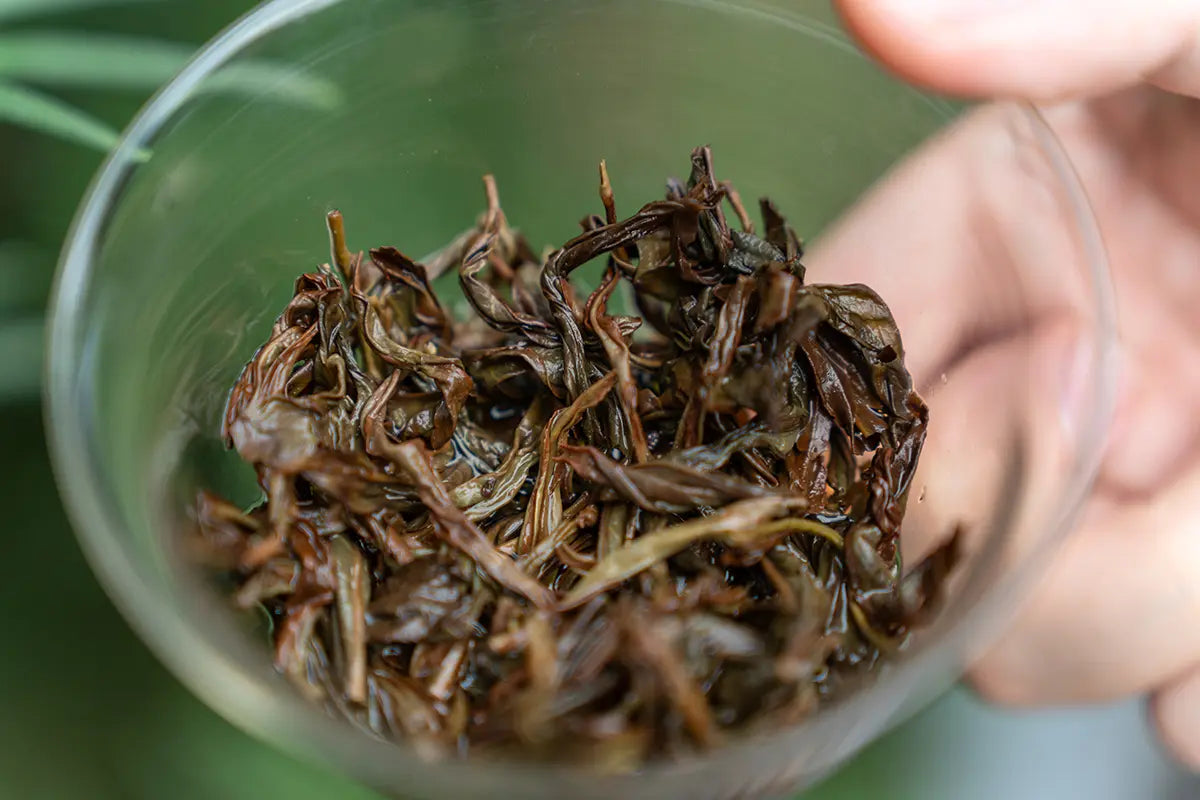
The Most Important Factors for the Perfect Oolong Tea Aroma
Oolong tea is renowned for its unique and rich aroma. Some may wonder if the fragrance in Oolong tea comes from artificial flavors. No, the distinctive aroma of Oolong tea is determined by various factors such as the tea tree variety, the standards for picking fresh leaves, and the manufacturing process.
Tea Tree Variety
1."Varietal Aroma" of Oolong Tea
The differences in fresh leaves and growth characteristics of different tea tree varieties determine the unique aromatic quality of loose leaf oolong tea. Many famous Oolong teas are often named after the tea tree variety due to their distinct aroma.
The "Varietal Aroma" of Oolong tea is quite prominent. For example, Da Hong Pao has a "rocky charm," Tie Guan Yin has a "musical charm," and Rou Gui has a "cinnamon fragrance." Oolong teas with "Varietal Aroma" are often considered classic and make excellent Christmas tea gifts or New Year tea gifts.
2.Characteristics of Oolong Tea Tree Varieties
Most Oolong tea tree varieties have medium to large-sized leaves with a thick waxy layer on the leaf surface. During processing, this wax can transform into aromatic substances, contributing to the fragrance of Oolong tea.
In addition to large-leaf Oolong varieties, the lower epidermis of tea tree leaves contains glandular scales that can also secrete aromatic substances, adding another dimension to the aroma of Oolong tea.
Furthermore, mature leaves contain lipid particles that are absent in the tender shoots of a single bud and leaf, providing a material basis for the formation of a rich aroma during the initial processing of Oolong tea.
Fresh Leaf Standards
1.Oolong Tea Fresh Leaves Require a Certain Level of Maturity.
The quality of fresh leaves directly affects the overall quality of Oolong tea.
The requirements for fresh leaves in loose-leaf Oolong tea differ from those of loose leaf green tea. Oolong tea requires a certain level of maturity, and the picking process involves "open-faced picking." When the leaves are in the "open-faced" state, the content of aromatic components such as benzaldehyde and linalool is higher. Additionally, it contains more amino acids, carotenoids, and other compounds.
2.Oolong Tea Fresh Leaves Should Not Be Too Tender or Too Old.
The withering and oxidation processes contribute to the formation of aldehyde compounds, enhancing the aroma of Oolong tea. If the fresh leaves are too tender, the content of catechins and caffeine in the leaves will be excessively high. The precursor substances of aromatic compounds, such as sugars and ether extracts, will be relatively low, resulting in a tea with a lower aroma and a bitter taste that does not meet the quality requirements of Oolong tea.
Of course, the fresh leaf material should not be too old either. Tea made from overly mature leaves will have a coarse appearance, lack internal substances, have a lower quality due to low aromatic compound levels, and higher cellulose content, making it challenging to achieve the desired high aroma and mellow taste characteristic of Oolong tea.
Tea Processing Technique
1.Zuoqing
Zuoqing is a characteristic process in Oolong tea production, and it is a key step in shaping the quality style of Oolong tea that other loose leaf tea do not undergo. The unique aroma of Oolong tea is also developed during this process. Therefore, tea farmers often say they are "turning the river and overturning the sea to produce Oolong." Withering involves two steps: Yaoqing (shaking) and Liangqing (cooling), which are performed alternately.
Yaoqing (shaking) : Simply put, it involves continuously shaking the withered tea leaves in a bamboo sieve. The tea leaves dance and roll inside the sieve, causing friction and collision between the leaves and the sieve walls, as well as between the leaves themselves.
Liangqing (cooling) : After Yaoqing (shaking), the tea leaves are spread thinly on a bamboo sieve and left to rest for a period.
The purposes of these operations are twofold. First, to damage the cell walls, increase the ratio of tea extracts within the leaves and stems, and enhance the tea's aroma. Second, to induce a slight fermentation in the tea leaves, creating a complex aroma. Without the alternating Yaoqing (shaking) and Liangqing (cooling) process performed three to five times, it is challenging for Oolong tea to develop a strong aroma while possessing various floral and fruity qualities. It is precisely this intricate and complex withering process that allows many classic Oolong teas, such as Tie Guanyin, Da Hong Pao, and Fenghuang Dancong, to be considered among the best loose leaf tea varieties.
2.Roasting
Compared to the roasting of green tea, the roasting of Oolong tea serves not only to dry and halt the oxidation of the raw tea leaves but also involves further processing of the leaves.
The roasting of Oolong tea is also known as "baking." It involves roasting the tea leaves to control fermentation by altering the moisture content within the leaves. This process also leads to the transformation of substances such as catechins and caffeine, ultimately adjusting and controlling the final aroma of the tea. This is the fundamental principle behind the roasting of Oolong tea.
During this process, the degree of roasting varies, influencing the final aroma. For lightly roasted Oolong teas, such as TieGuanyin, there is a delicate and clear flavor. For moderately roasted ones, like Da Hong Pao, there is an initial presence of "fire aroma," which may dissipate after some time or multiple infusions. Only then can one experience the high aroma, sweetness, and various floral and fruity notes characteristic of Oolong tea. To appreciate the differences in roasting levels of Oolong tea, one can try comparing tea samplers, allowing for a better understanding of the nuances and delights involved.
It is the unique tea tree varieties, specific picking standards, and exquisite craftsmanship of Oolong tea that contribute to its distinctive and rich aroma, including notes of freshness, floral, fruity, honey, and floral-fruit fragrances. Hopefully, this article will help readers gain a deeper understanding of Oolong tea, enabling them to better savor and appreciate this unique loose-leaf tea.






